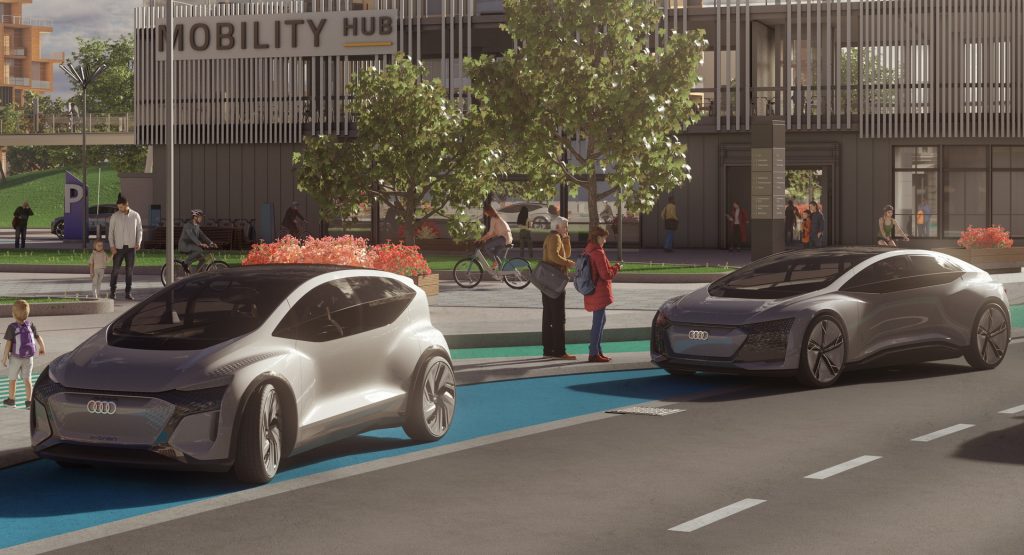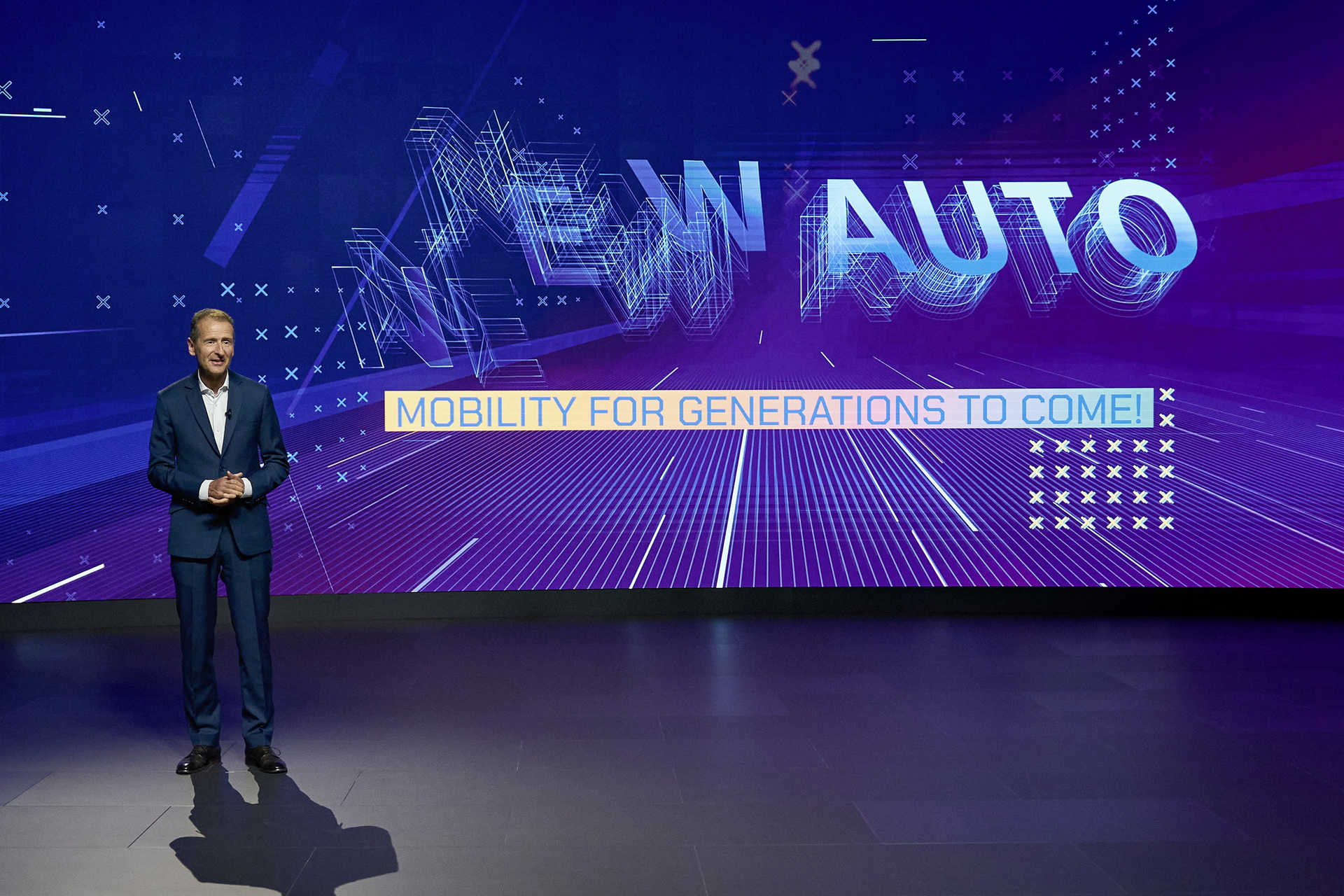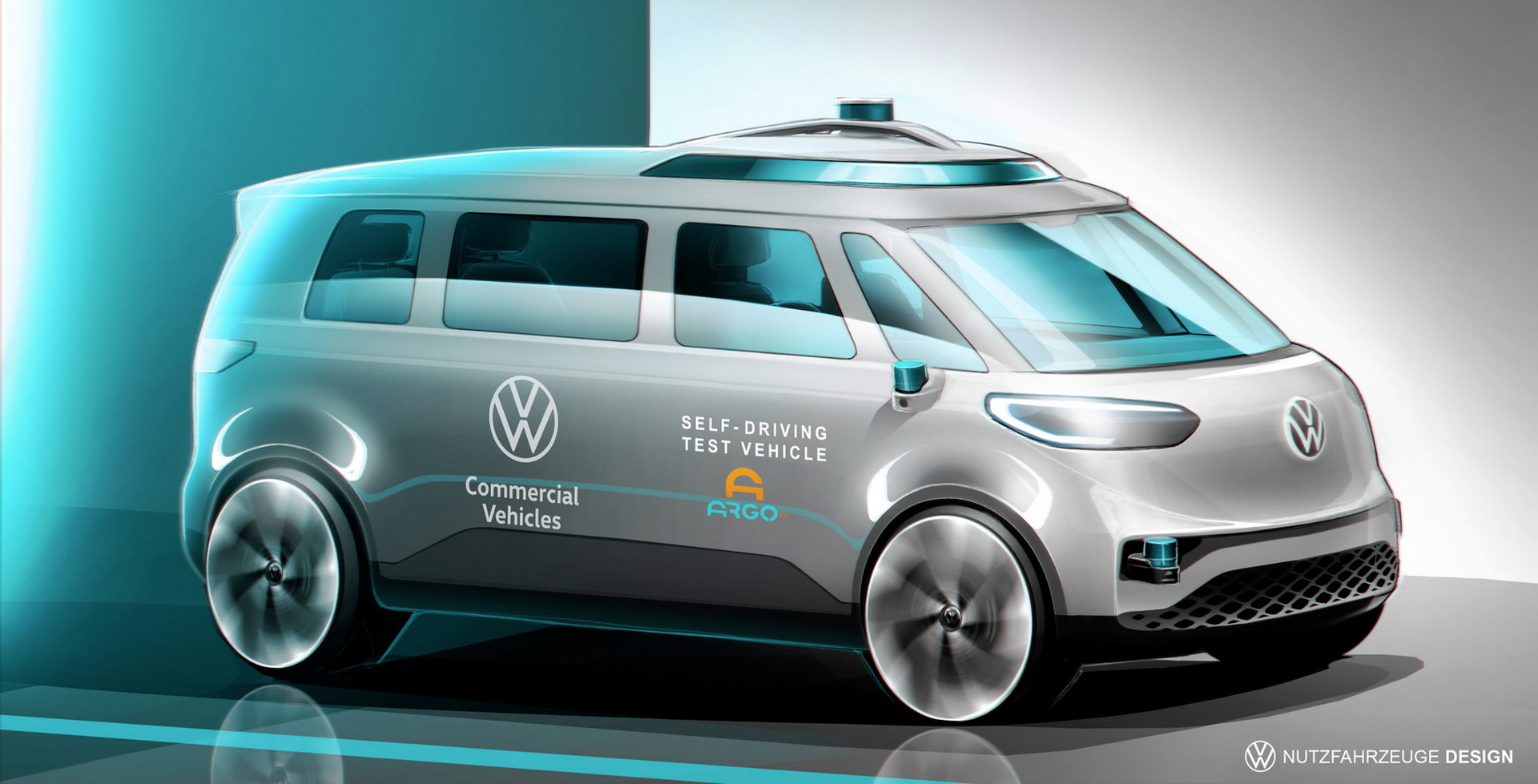Volkswagen presented its product plan for the next ten years to the world today and it will depend on profits from its internal combustion engine cars to fund a major shift into electric, autonomous, and otherwise future-facing vehicles.
The Volkswagen Group aims for the majority of its vehicles to be zero-emission in all major markets by 2040 and to be able to operate climate neutrally by 2050. To achieve this, it plans to increase its profit margins from 7-8% to 8-9% through 2025.
It will use that profit to move from its current collection of five vehicle architectures, down to two, and eventually just one. The company currently uses the MQB platform for cars like the Volkswagen Golf, the MLB platform for vehicles like the Audi A7, and the MSB platform for vehicles like the Porsche Panamera. It also has the MEB platform for vehicles like the Volkswagen ID.4 and the PPE platform that will underpin vehicles like the Audi A6 e-tron.
Read Also: Audi Grand Sphere Concept Will Preview Flagship A8’s Sleek Electric Successor For 2024
Over the course of the coming decade it plans to phase out the internal combustion platforms, and eventually consolidate its two electric platforms into one it calls the Scalable Systems Platform (SSP). The platform will eventually form the basis of every Volkswagen Group vehicle and will be offered to other automakers. The first vehicle on it will be unveiled in 2026 as a follow-up for the Audi A8. The company will reportedly show a concept of the vehicle at the Munich Motor Show in September.
“Introducing the SSP means leveraging our strengths in platform management and building on our capabilities to maximize synergies across segments and brands,” said Markus Duesmann, Audi CEO. “In the long run, our SSP will significantly reduce complexity in mechatronics.”
In order to run the new platforms, Volkswagen has already set up a software unit called CARIAD. The unit is focused on three primary software platforms. E³ 1.1 will allow for over-the-air updates to MEB platform vehicles like the ID.4. E³ 1.2 does the same for vehicles on the PPE platform that will underpin electric Porsches and Audis.
Finally, E³ 2.0 will develop a new unified operating system for vehicles on the SSP platform that will go under vehicles from all of the Volkswagen Group‘s brands.
“Software plays the decisive role in the transformation from a pure car company to an integrated mobility group,” said CARIAD CEO Dirk Hilgenberg. “By 2030, software–on the basis of automated driving–can become a major source of income in our industry.”
Indeed, VW plans to offer its first autonomous mobility service in Europe by 2025, followed shortly by the U.S. It also hopes to offer buyers vehicles with level 4 automated driving, though it’s less precise about when those will come.
“The Volkswagen Group aspires to achieve a strong competitive edge in the field of mobility solutions,” said Christian Dahlheim, head of sales for the Volkswagen Group. “We will be able to offer services directly to our customers or cooperate with strong partners, depending on the specific situation in each market.”
To power it all, VW plans to introduce a unified battery cell design that it says will reduce costs by 50% over current costs. It will produce them at six giga factories in Europe with a production capacity of 240 GWh by 2030. It also plans to recycle those batteries to reduce costs and reduce its environmental impact.
The group is setting up charging locations around Europe and also plans to partner with other corporations to ensure that drivers have access to quick convenient charging. Electrify America, meanwhile plans to double its charging infrastructure in the U.S. and Canada by 2025.
Working with partners in China will also be a focus because it remains one of Volkswagen’s chief markets, along with Europe and North America said the automaker.
“We set ourselves a strategic target to become global market leader in electric vehicles – and we are well on track. Now we are setting new parameters,” said CEO Herbert Diess. “Based on software, the next much more radical change is the transition towards much safer, smarter, and finally autonomous cars. That means for us: Technology, speed, and scale will matter more than today. The future of cars will be bright!”







